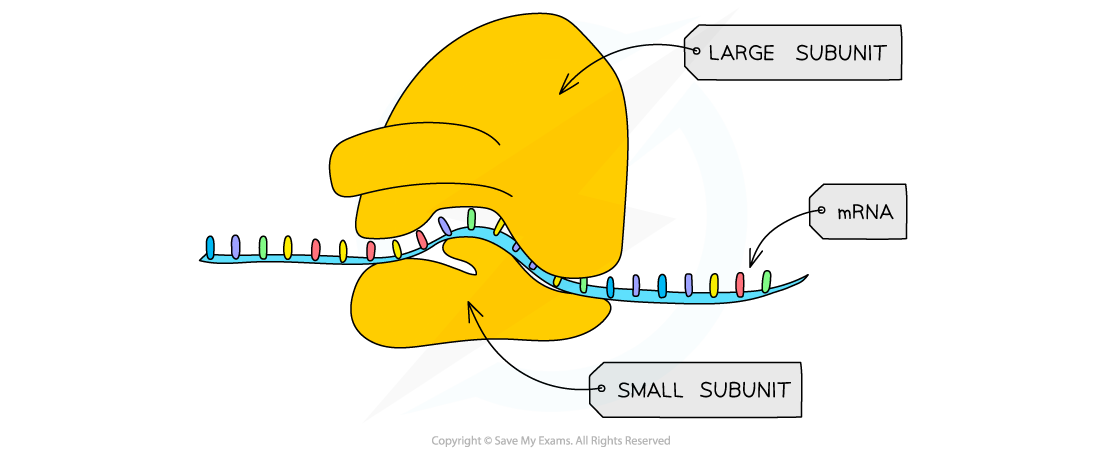- 翰林提供学术活动、国际课程、科研项目一站式留学背景提升服务!
- 400 888 0080
AQA A Level Biology复习笔记 1.5.5 Ribosomes
Ribosomes
- Ribosomes are small organelles that are either free in the cytoplasm (of all cells) or are attached to the rough endoplasmic reticulum (only in eukaryotic cells)
- Ribosomes are the site of protein synthesis (where proteins are made)
- They ‘read’ RNA to make polypeptides (proteins) in a process known as translation
- Ribosomes are themselves formed from RNA and proteins
- The RNA that forms part of the structure of ribosomes is a specific type of RNA known as ribosomal RNA (rRNA)
- The rRNA in ribosomes has enzymatic properties that catalyse the formation of peptide bonds between amino acids
- Each ribosome is a mixture of ribosomal RNA and proteins
- Ribosomes in eukaryotic cells are larger than those in prokaryotic cells. In both cell types, ribosomes are composed of a small subunit and a large subunit
- 80S ribosomes (composed of 60S and 40S subunits) are found in eukaryotic cells
- 70S ribosomes (composed of 50S and 30S subunits) are found in prokaryotic cells, as well as in the mitochondria and chloroplasts of eukaryotic cells
- The large subunit is the site of translation
- The rRNA and proteins of the large subunit hold tRNA molecules (with their attached amino acids) in place
- rRNA can then catalyse the condensation reactions between amino acids
- mRNA sits between the two subunits and the ribosome moves along it as it translates it into a polypeptide
- Unlike some organelles, ribosomes are not surrounded by a membrane

A diagram of a ribosome, showing the small and large subunits
转载自savemyexam

在线登记
最新发布
翰林课程体验,退费流程快速投诉邮箱: yuxi@linstitute.net 沪ICP备2023009024号-1








